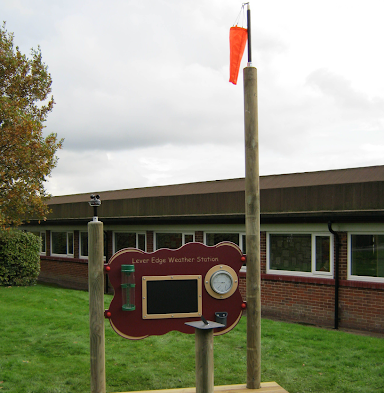Weather Stations


Weather is something that affects our lives in a big way, from what we wear and where we choose to live, work and play, to the kinds and availability of the food we grow and eat. Adding a weather station to your school garden can be an engaging way to study weather by collecting data and observing weather patterns. When it comes to learning about weather, I prefer the low tech approach. With digital weather stations students only see the data, but with simpler hand held instruments they can be involved in collecting that data. A weather station is the perfect way for students to collect both qualitative and quantitative data and it is much more meaningful when they collect that data themselves. Here is a list of instruments that we like to see included in a weather station.
- Cardinal directions (painted pavers in the ground can easily accomplish this)
- Thermometer (large and easy to read, labeled with both Fahrenheit and Celsius)
- Rain gauge (easy to read)
- Wind sock
- Cloud types poster/laminated reference sheet
- Handheld wind speed indicator (anemometer)
- Soil thermometer
- Thermometer for measuring water temperature
- Weather proof box for storing recording sheets
Learn more about weather station components and how to engage students in this outdoor learning center in our video. Check out our lesson plan that meets standards for 2nd and 5th grade: Weather, Weather, Everywhere.
- Categories: